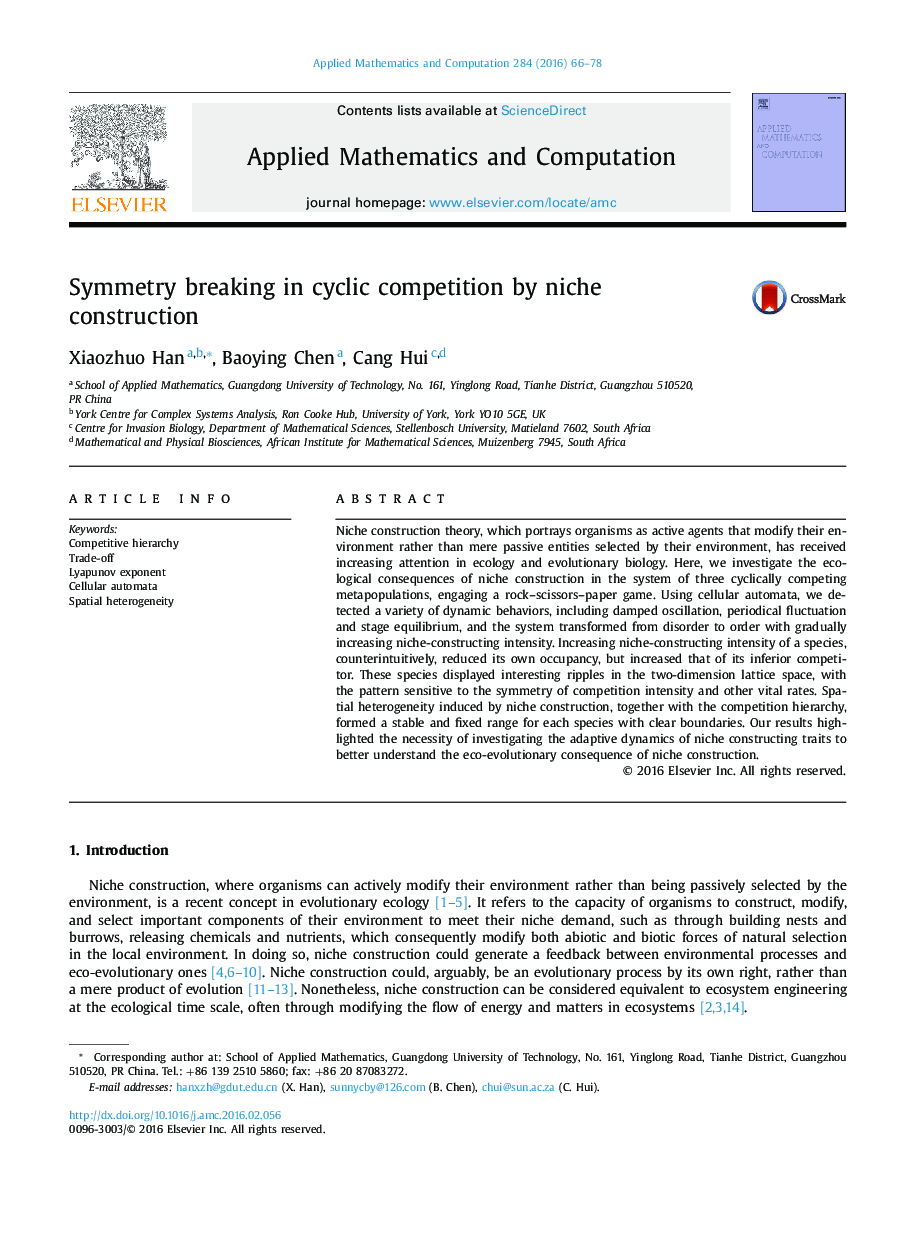| Article ID | Journal | Published Year | Pages | File Type |
|---|---|---|---|---|
| 4625819 | Applied Mathematics and Computation | 2016 | 13 Pages |
Niche construction theory, which portrays organisms as active agents that modify their environment rather than mere passive entities selected by their environment, has received increasing attention in ecology and evolutionary biology. Here, we investigate the ecological consequences of niche construction in the system of three cyclically competing metapopulations, engaging a rock–scissors–paper game. Using cellular automata, we detected a variety of dynamic behaviors, including damped oscillation, periodical fluctuation and stage equilibrium, and the system transformed from disorder to order with gradually increasing niche-constructing intensity. Increasing niche-constructing intensity of a species, counterintuitively, reduced its own occupancy, but increased that of its inferior competitor. These species displayed interesting ripples in the two-dimension lattice space, with the pattern sensitive to the symmetry of competition intensity and other vital rates. Spatial heterogeneity induced by niche construction, together with the competition hierarchy, formed a stable and fixed range for each species with clear boundaries. Our results highlighted the necessity of investigating the adaptive dynamics of niche constructing traits to better understand the eco-evolutionary consequence of niche construction.
